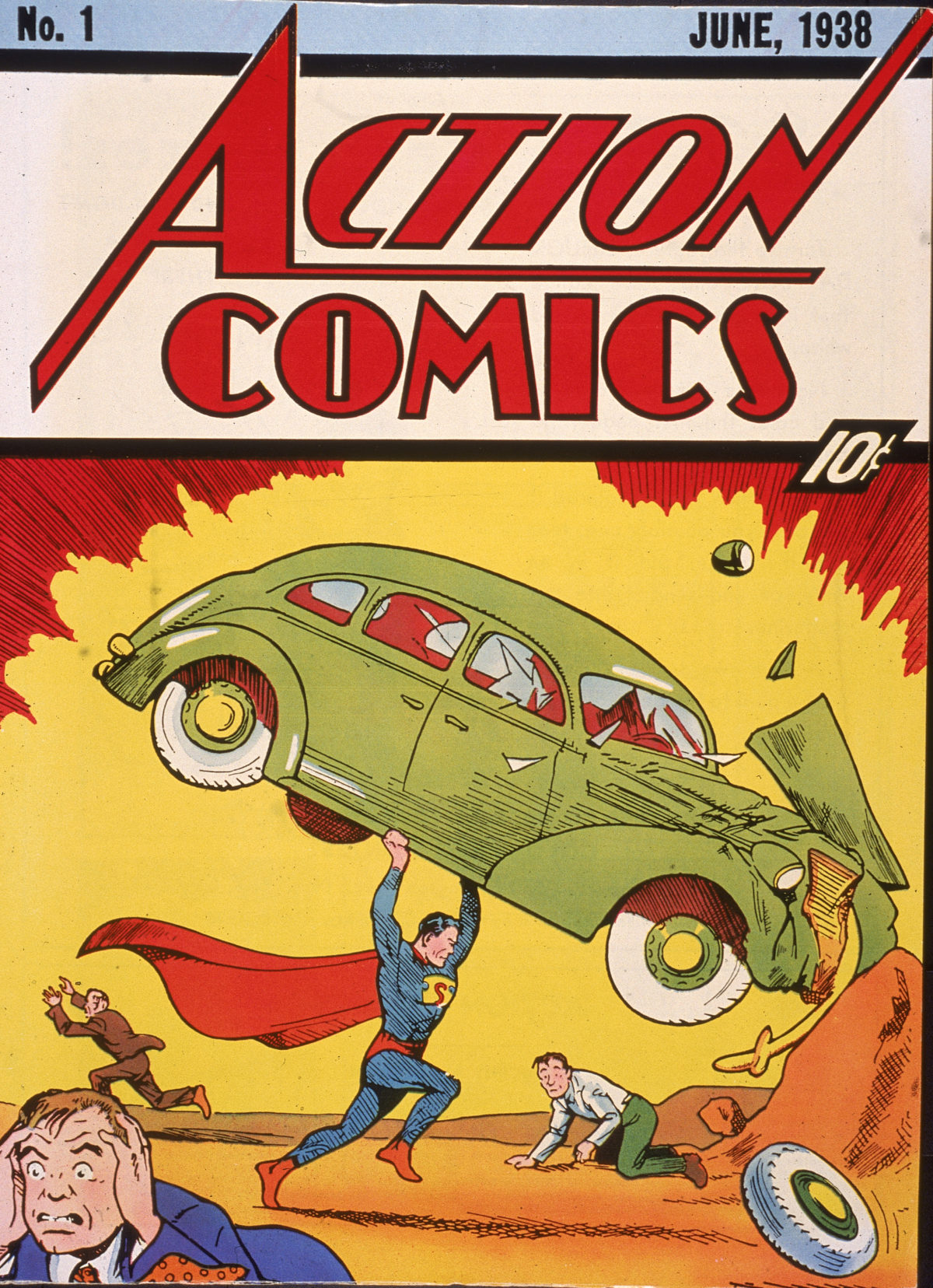Before publication of the June 1938 Action Comics #1, Americans called someone a “superman” if he had unusual gifts as an athlete or politician. But once that illustrated anthology, a DC Comics property costing a dime, introduced a character by that name, “Superman” came almost instantly to mean an immensely powerful tall-building-leaping fellow who, when not fighting crime, masqueraded as a mild-mannered resident of a metropolis called Metropolis where, as a newspaperman, he wrote for the Daily Planet. Thanks to a backstory involving the dying planet Krypton, his loving but doomed parents Jor-El and Lara, and a fraught journey through space, the infant Kal-el escapes a natural calamity destroying his home planet. On Earth, Kal-el’s baby-scale spaceship deposits him on the farm of Sam and Molly Kent outside the American town of Smallville. The Kents name their adopted son Clark Joseph, and raise him to do good. Oh, and because of a genius plot twist by creators Jerry Siegel and Joe Shuster, on Earth Kal-el/Clark possesses amazing superpowers: bullets bounce off him, he can fly, tunnel through the earth, hoist locomotives and automobiles, see through walls, and on and on. His only weakness is radiation from Kryptonite, a crystal thrown off by his exploding home planet. Kryptonite comes in colors, each with unique effects. Green Kryptonite saps Kryptonians of strength; exposed too long, they die. Red Kryptonite causes Kryptonians to engage in spasms of whimsical behavior. In a world short on imaginary superheroes whose derring-do cost a dime—there were like, none—Superman became a sensation. Today’s profusion of superhero characters traces to writer Siegel and illustrator Shuster, who endured years of toil and frustration before hitting it big.
Siegel and Shuster were in their mid-teens when they met at Glenville High School in Cleveland, Ohio, in 1932. At first self-publishing and later struggling without result to sell their creation to established publishers, the pair conceived of a character they at first called “The Superman.” Vexed by lack of success, the team broke up and reconciled, always with eyes open for opportunity, which at first meant writing and drawing other comics characters on salary. But the two kept refining the story of The Superman and his journalistic alter ego. The Superman gained his striking uniform, which he donned by ducking into telephone booths. He lost the article in his name. Clark Kent acquired colleagues Lois Lane and Jimmy Olsen. All three reported for the Daily Planet, run by peevish publisher Perry White. In February 1938, Detective Comics—later “DC Comics”—agreed to pay Siegel and Shuster $10 a page for a 13-page Superman story that made the company’s Action Comics #1 Anthology a big seller. A year later, Superman got his own comic book, which has been in print ever since, spawning TV series, films, audio recordings, and a host of titanic inheritors whose roots reach all the way back to that field in Smallville.
Photo Credit: Getty Images
historynet magazines
Our 9 best-selling history titles feature in-depth storytelling and iconic imagery to engage and inform on the people, the wars, and the events that shaped America and the world.






